
Canisius High School is a Catholic, private college-preparatory school for young men run by the USA Northeast Province of the Society of Jesus in Buffalo, New York, United States, just north of the Delaware Avenue Historic District. Founded in 1870, the school has historical ties to Canisius College. Canisius operates independently from the New York State guidelines established by the Board of Regents. It has the largest high school student population among private schools in Western New York.

Theodore Roosevelt Inaugural National Historic Site preserves the Ansley Wilcox House, at 641 Delaware Avenue in Buffalo, New York. Here, after the assassination of William McKinley, Theodore Roosevelt took the oath of office as President of the United States on September 14, 1901. A New York historical marker outside the house indicates that it was the site of Theodore Roosevelt's Inauguration.
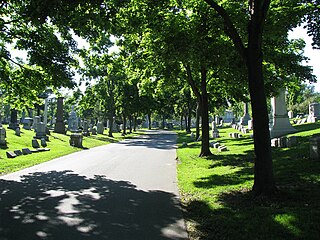
Forest Lawn Cemetery is a historic rural cemetery in Buffalo, New York, founded in 1849 by Charles E. Clarke. It covers over 269 acres (1.1 km2) and over 152,000 are buried there, including U.S. President Millard Fillmore, First Lady Abigail Fillmore, singer Rick James, Congresswoman Shirley Chisholm, and inventors Lawrence Dale Bell and Willis Carrier. Forest Lawn is on the National Register of Historic Places.
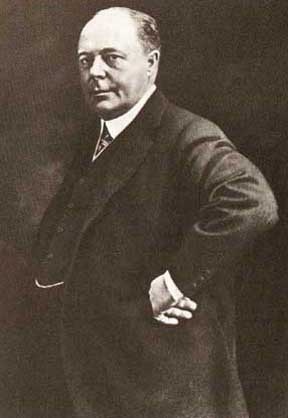
Seymour Horace Knox I, was a businessman from Buffalo, New York, who made his fortune in five-and-dime stores. He merged his more than 100 stores with those of his first cousins, Frank Winfield Woolworth and Charles Sumner Woolworth, to form the F. W. Woolworth Company. He went on to hold prominent positions in the merged company as well as Marine Trust Co. He was the father of Seymour H. Knox II and grandfather of Seymour H. Knox III and Northrup Knox, the co-founders of the Buffalo Sabres in the National Hockey League.
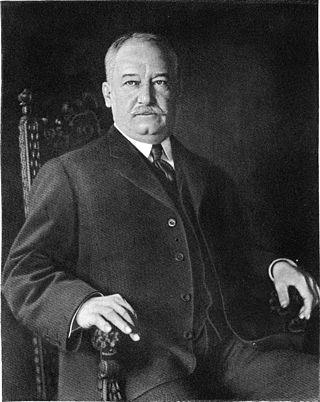
Ansley Wilcox was an American scholar, Oxford graduate, prominent lawyer, civil service reform commissioner, New York political insider and friend of Theodore Roosevelt. After the assassination of William McKinley, on September 14, 1901, Vice President Roosevelt was sworn in as 26th president of the United States in the library of Wilcox's home at 641 Delaware Avenue in Buffalo, New York.
The Grover Cleveland Golf Course is a historic golf course located in Buffalo, New York that hosted the 1912 U.S. Open that was founded as The Country Club of Buffalo. It is one of two courses owned by Erie County.

The first inauguration of Theodore Roosevelt as the 26th president of the United States, took place on Saturday, September 14, 1901, at the Ansley Wilcox House, at 641 Delaware Avenue in Buffalo, New York, following the death of President William McKinley earlier that day. The inauguration – the fifth non-scheduled, extraordinary inauguration to ever take place and the first in the 20th century – marked the commencement of the first term of Theodore Roosevelt as president. John R. Hazel, U.S. District Judge for the Western District of New York, administered the presidential oath of office.

Delaware Avenue Historic District is a national historic district located at Buffalo, New York, United States, and Erie County. It is located along the west side of Delaware Avenue between North Street to the South and Bryant Street to the North.

The Rainier Club is a private club in Seattle, Washington; it has been referred to as "Seattle's preeminent private club." Its clubhouse building, completed in 1904, is listed on the National Register of Historic Places. It was founded in 1888 in what was then the Washington Territory. As of 2008, the club has 1,300 members.
Duane Lyman (1886–1966) was an architect based in Buffalo, New York, known for his prolific career which included 100 school buildings, many churches, and numerous large homes both in the city and suburban communities. At the time of his death, Lyman was referred to as the "dean of Western New York Architecture."

The Architecture of Buffalo, New York, particularly the buildings constructed between the American Civil War and the Great Depression, is said to have created a new, distinctly American form of architecture and to have influenced design throughout the world.
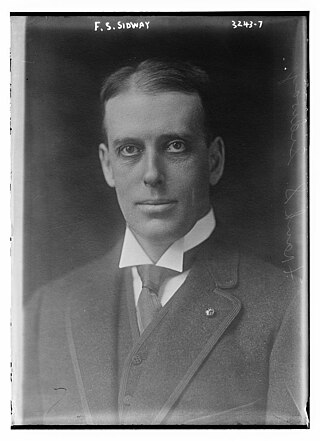
Frank St. John Sidway, was a Buffalo, New York lawyer and National Guard leader. He also served as chairman of the Erie County Republican Party, and was a candidate for lieutenant governor in 1914.

Anson Conger Goodyear was an American manufacturer, businessman, author, and philanthropist and member of the Goodyear family. He is best known as one of the founding members and first president of the Museum of Modern Art in New York.

Charles Waterhouse Goodyear was an American lawyer, businessman, lumberman, and member of the prominent Goodyear family of New York. Based in Buffalo, New York, along with his brother, Frank, Charles was the founder and president of several companies, including the Buffalo and Susquehanna Railroad, Great Southern Lumber Company, Goodyear Lumber Company, Buffalo & Susquehanna Coal & Coke Company, and the New Orleans Great Northern Railroad Company.
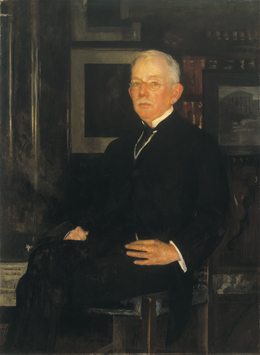
John Joseph Albright was a businessman and philanthropist, and one of Buffalo's leading socialites at the turn of the 20th century.
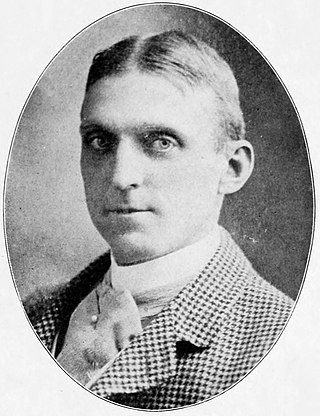
George Cary, was a major American architect from New York State known for his designs for the Pan-American Exposition of 1901 in Buffalo, New York.
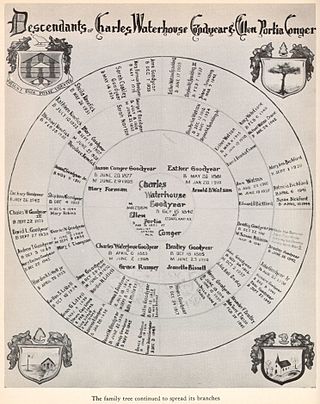
The Goodyear family is a prominent family from New York, whose members founded, owned and ran several businesses, including the Buffalo and Susquehanna Railroad, Great Southern Lumber Company, Goodyear Lumber Co., Buffalo & Susquehanna Coal and Coke Co., and the New Orleans Great Northern Railroad Company. Stephen Goodyear was a founder of the New Haven Colony, and served as Deputy governor from 1643 to 1658. Stephen's descendent, Charles Goodyear, invented vulcanized rubber; the Goodyear Tire and Rubber Company is named after him. The family was also involved in the arts. Anson Goodyear was an organizer of the Museum of Modern Art in New York City; he served as its first president and a member of the board of trustees. William Henry Goodyear was the first curator of the Metropolitan Museum of Art.
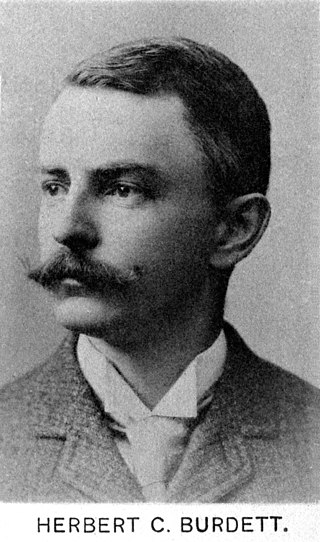
Herbert Channing Burdett (1855–1891) was an American architect trained in the office of Henry Hobson Richardson who, in a brief career, established himself as a successful designer of Shingle Style and Richardsonian Romanesque buildings in western New York. With his partner James Herbert Marling (1857–1895), Burdett designed several public buildings in Buffalo, New York and a number of residential properties for the leading citizens of Buffalo, Woodstock, Ontario and Burlington, Vermont. Owing to his premature death, Burdett is little remembered today outside those areas where his known buildings still survive.

Frank Henry Goodyear was an American businessman, lumberman, and member of the prominent Goodyear family of New York. He was the founder and president of several companies, including the Buffalo and Susquehanna Railroad, Great Southern Lumber Company, Goodyear Lumber Co., Buffalo & Susquehanna Coal and Coke Co., and the New Orleans Great Northern Railroad Company.
Major Bradley Goodyear was an American lawyer, soldier, and member of the Goodyear family of New York.






















